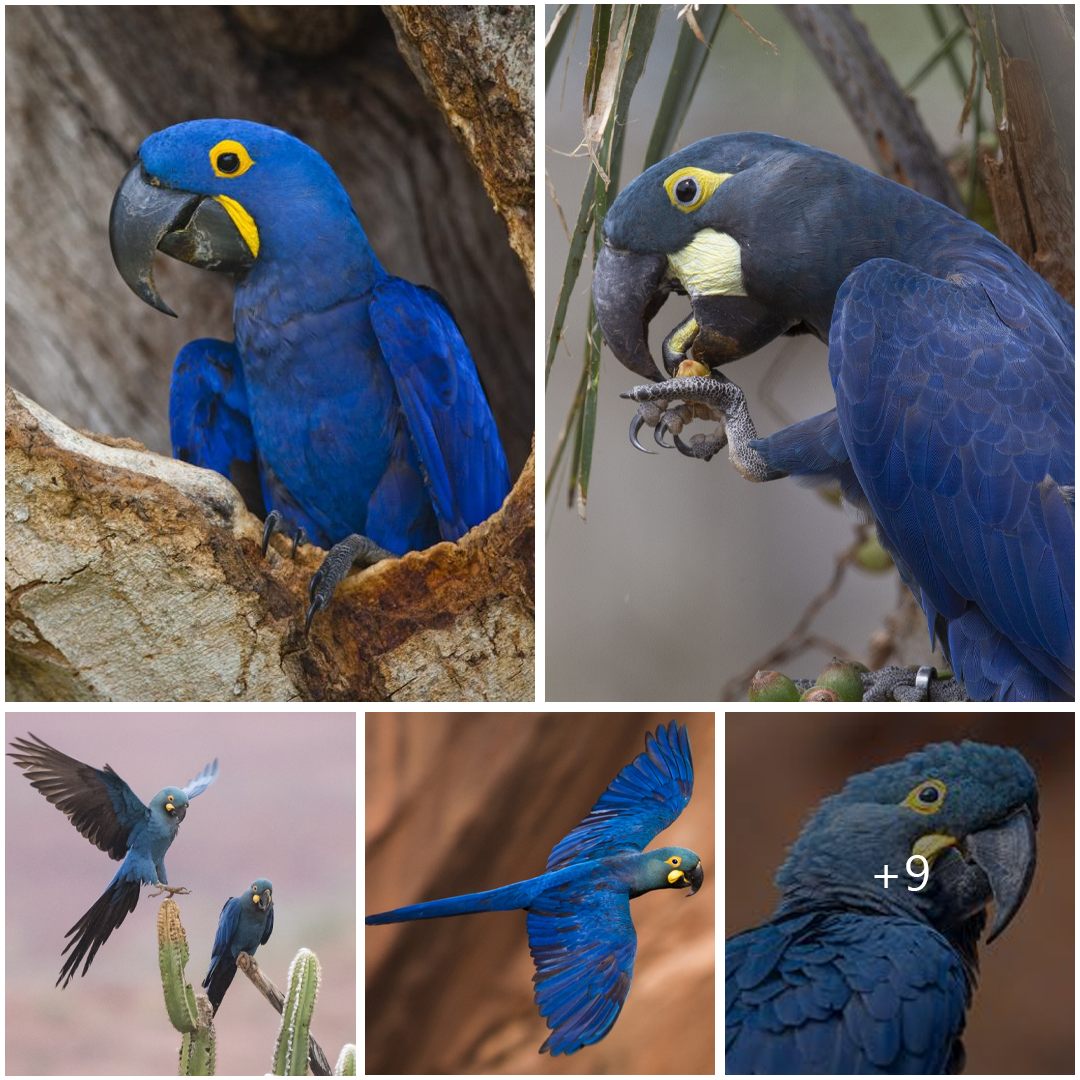
“The Lear’s Macaw: A Portrait of Resilience”
Body: The Lear’s Macaw, scientifically known as Anodorhynchus leari, stands as a beacon of resilience in the face of adversity. Endemic to the rugged landscape of northeastern Brazil, this striking blue parrot with its distinctive yellow facial skin has long captured the fascination of conservationists and bird enthusiasts alike.
Named after the British illustrator Edward Lear, who first documented the species in the 19th century, the Lear’s Macaw is a species teetering on the brink of extinction. Habitat loss, illegal trapping for the pet trade, and fragmentation of its remaining habitat have pushed this majestic bird to the edge of survival.
Despite these daunting challenges, concerted conservation efforts have offered a glimmer of hope for the Lear’s Macaw. Organizations such as the Instituto Arara Azul and the Loro Parque Fundación have spearheaded initiatives to protect the species and its dwindling habitat, employing strategies such as habitat restoration, community education, and captive breeding programs.
One of the most significant success stories in the conservation of the Lear’s Macaw is the establishment of the Raso da Catarina Reserve, a protected area specifically dedicated to safeguarding the bird’s primary nesting and foraging grounds. Through collaborative efforts between government agencies, NGOs, and local communities, this reserve has become a stronghold for the species, providing essential protection for its survival.
Furthermore, the implementation of anti-poaching measures and enforcement of wildlife protection laws have helped curb the illegal trade in Lear’s Macaws, reducing the threat posed by trapping and smuggling.
Despite these conservation victories, challenges remain on the horizon for the Lear’s Macaw. Climate change, habitat degradation, and the encroachment of human activities continue to threaten the long-term survival of this species. Continued vigilance and commitment to conservation efforts will be essential to ensure that the Lear’s Macaw thrives in the wild for generations to come.
In conclusion, the Lear’s Macaw serves as a poignant reminder of the resilience of nature in the face of human-induced threats. Through collaborative conservation efforts and dedication to protecting its habitat, we can ensure that this magnificent bird continues to grace the skies of Brazil and inspire future generations with its beauty and resilience.






